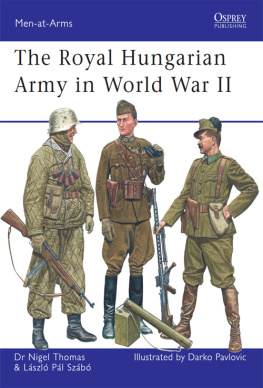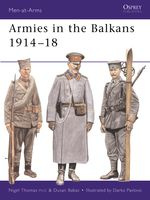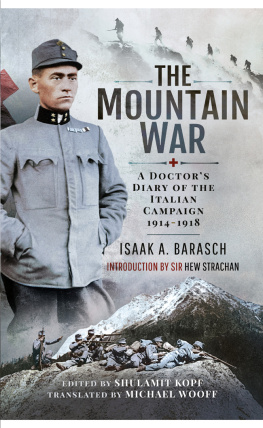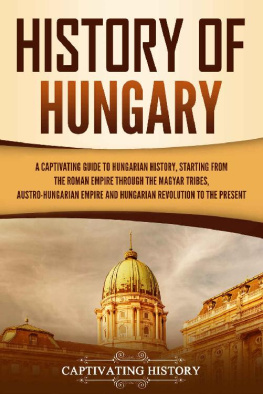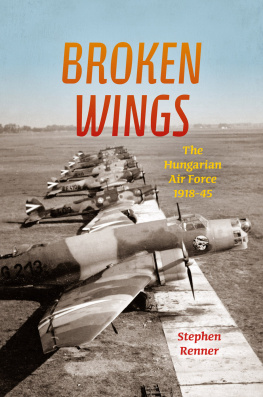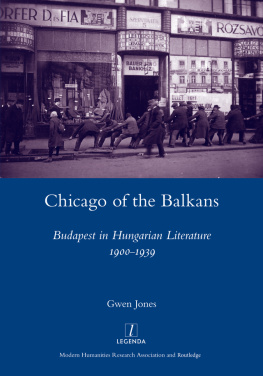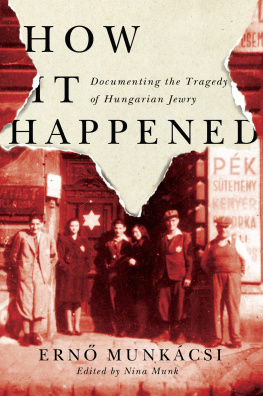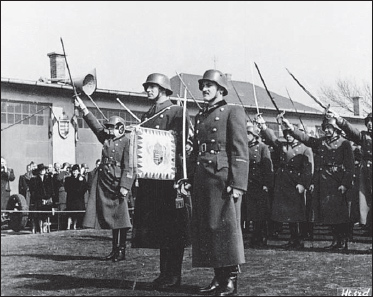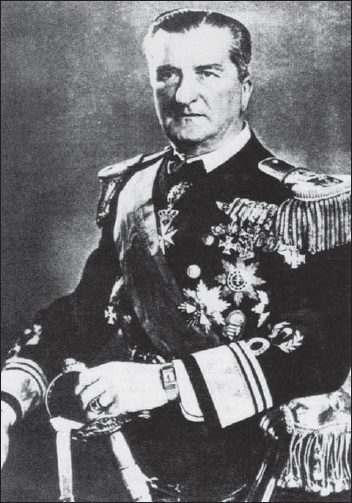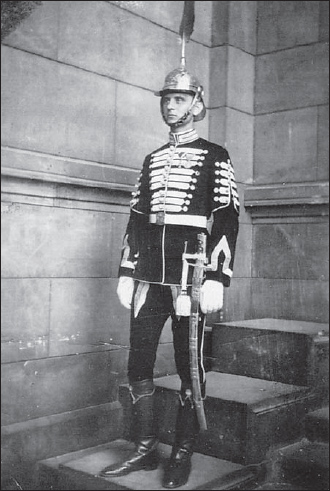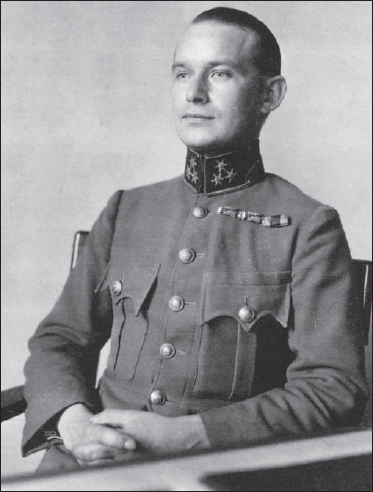Men-at-Arms 449
The Royal Hungarian Army in World War II
Dr Nigel Thomas & Lszl Pl Szb Illustrated by Darko Pavlovic
Series editor Martin Windrow
CONTENTS
THE ROYAL HUNGARIAN ARMY IN WORLD WAR II
THE HISTORICAL CONTEXT
T he Austro-Hungarian Empire was established in April 1867 with the Habsburg Franz-Josef as Emperor and King of Hungary. On 5 December 1868 the Magyar Kirlyi (M. Kir.) Honvdsg, the Royal Hungarian Army (literally Defence Force) was established.
In 1914 Hungary comprised 109,218 square miles (282,876 sq/km) with 20.8 million inhabitants 55 per cent Magyars and Szkelys (a Hungarian-speaking people of uncertain origin), 45 per cent Romanian, German, Croat, Serb, Slovak, Ruthene, Jewish, Roma, Slovene and Italian. During World War I Hungarians fought in the Austro-Hungarian Common Army and Royal Hungarian Army against the Entente nations.
Vice-Admiral Mikls Horthy (18681957). A Protestant landowner and the Austro-Hungarian Fleets last commander, Horthy earned great prestige by re-establishing the Hungarian Kingdom; but by June 1941 this indecisive anglophile had allowed pro-German advisers to persuade him to commit Hungary to the disastrous Axis alliance. (Friedrich Herrmann Memorial Collection)
On 3 November 1918 Austro-Hungary, hard-pressed but undefeated, signed an armistice anticipating a formal peace treaty. The Common and Royal Hungarian Armies were abolished; and from November 1918 the Entente demanded that Hungary immediately cede Slovakia to Czechoslovakia, Transylvania to Romania and Croatia, and the Bcska-Baranya districts to the Kingdom of the Serbs, Croats and Slovenes (SHS later, Yugoslavia). Some 70,000 Czechoslovak, Serbian and Romanian forces occupied these areas before advancing further into Hungary. On 23 March 1919 a Hungarian Soviet Republic was proclaimed, and the 25,000-strong Hungarian Red Army, under experienced former Austro-Hungarian General Staff officers, fought valiantly; but on 1 August the Republican government resigned, and on 4 August the Romanian Army occupied Budapest.
An anti-communist government operated in Arad, later Szeged, southern Hungary, 5 May9 August 1919, with Vice-Admiral Mikls Horthy de Nagybnya, the last commander of the Austro-Hungarian Fleet, as minister of war. On 9 August, Horthy united various military units into a 25,000-strong National Army (Nemzeti Hadsereg) at Szeged, and by 16 November 1919 he controlled Hungary. Horthy ruled as Regent from 1 March 1920, but in 1921 prevented Kroly IV, the former Austro-Hungarian Emperor and King of Hungary, from regaining the throne.
A member of the Parliamentary Guard, wearing the scarlet palace ceremonial uniform with white braids, and white metal helmet with brass edgings. (Tibor Horvth, RegMilHun Collection)
The Treaty of Trianon
On 4 June 1920 Hungary signed the Treaty of Trianon. The national territory was reduced by 67 per cent to 35,918 square miles (93,030 sq/km); the other regions, with significant Magyar populations, were awarded thus: Slovakia and Ruthenia (600,000 Magyars) to Czechoslovakia; Transylvania (1.7 million Magyars and Szkelys) to Romania; Bcska, Baranya and western Bnt (now Vojvodina), Croatia, Medjimurje, Prekmurje (314,000 Magyars) to SHS; Burgenland (26,000 Magyars) to Austria; parts of rva and Szepes counties to Poland; and Fiume (now Rijeka) to Italy. Hungarys population of 7,987,000 39 per cent of the 1914 total was 90 per cent Magyar and 7 per cent ethnic German, but 2,640,000 Magyars and Szkelys lived in neighbouring states.
The Royal Hungarian Army was reduced to 35,000 volunteers, mainly infantry and cavalry, without reserves. Light weapons were permitted, but no heavy artillery, tanks or aircraft. The Military Inter-Allied Commission of Control, with 52 Entente officers, monitored compliance.
Hungarians universally regarded Trianon as unjust and excessively punitive, dealing a blow to national pride from which Hungary has still not fully recovered. A powerful thousand-year old kingdom was reduced to a weak rump state, vulnerable to attacks from neighbours it had once dominated. Hungary became a landlocked Ruritania, a kingless kingdom under an admiral with no navy, defended by 9 brigades confronting 60 Czechoslovak, Romanian and Yugoslav divisions. Territorial revisionism the return of regions taken by Trianon was a universally popular cause, focusing Hungarys foreign policy and driving her to seek allies. Under the Rome Protocols of 17 March 1934, Fascist Italy backed Hungarys claims if Hungary supported Italys ally, Austria, against Nazi Germany. When Germany and Italy became allies on 15 October 1936, Hitler supported Hungarian territorial revisionism, but encouraged hostility between Hungary, Romania and Slovakia, only allowing Hungary to regain regions with majority Magyar populations.
THE ROYAL HUNGARIAN ARMY
Pre-war organization
The National Army was redesignated the Royal Hungarian Army on 1 Jan 1922 (it was again renamed on 20 Oct 1944, simply as the Army Honvdsg by Ferenc Szlasi). Troops hid from Military Mission inspectors, transferred to the Royal Gendarmerie, civilian police, Customs Guards (from 1925, Border Guards), Finance Guards and the Levente youth organization, or joined cover organizations the River Guard (Danube Flotilla), Air Office (Air Force), and Police Recruit School (Armoured Troops). These personnel suffered low morale, undertaking non-military duties with civil titles and uniforms, with military officials in plain clothes.
An officer wearing the M1920 service tunic, with captains collar patch rank insignia on the stand-and-fall collar, and displaying World War I medal ribbons. (Tibor Horvth, RegMilHun Collection)
On 11 May 1922, 7 mixed brigades (17), 2 cavalry brigades (1, 2), 1 named horse artillery (1) and 3 named engineer (13) battalions were formed. One mixed brigade (Vegyesdandr), a skeleton corps, manned each military district (IVII) with 2 named infantry regiments (114), single named bicycle and artillery battalions, and hussar (cavalry), signals, supply and motor transport companies. A cavalry brigade had two named cavalry regiments (14). The Allied Mission was withdrawn on 31 March 1927, and the Army discreetly updated its weaponry.
On 5 March 1938 Prime Minister Klmn Darnyi announced the Gyr Programme of rearmament, under which the armed forces established a five-year expansion plan with Huba IIII revised orders of battle, commencing 1 Oct 1938. National conscription was introduced in 1939.
Service and training
At age 21 (later 19), young men undertook three years military service, before transferring to the 1st, 2nd and 3rd Reserves until age 65 or even 70. Potential career non-commissioned officers progressed through junior NCO (officially senior private, to circumvent Trianon limits) and warrant officer ranks, reaching Alhadnagy only after 29 years service. From March 1944, commissioned warrant officers were introduced, and a few WOs were promoted

